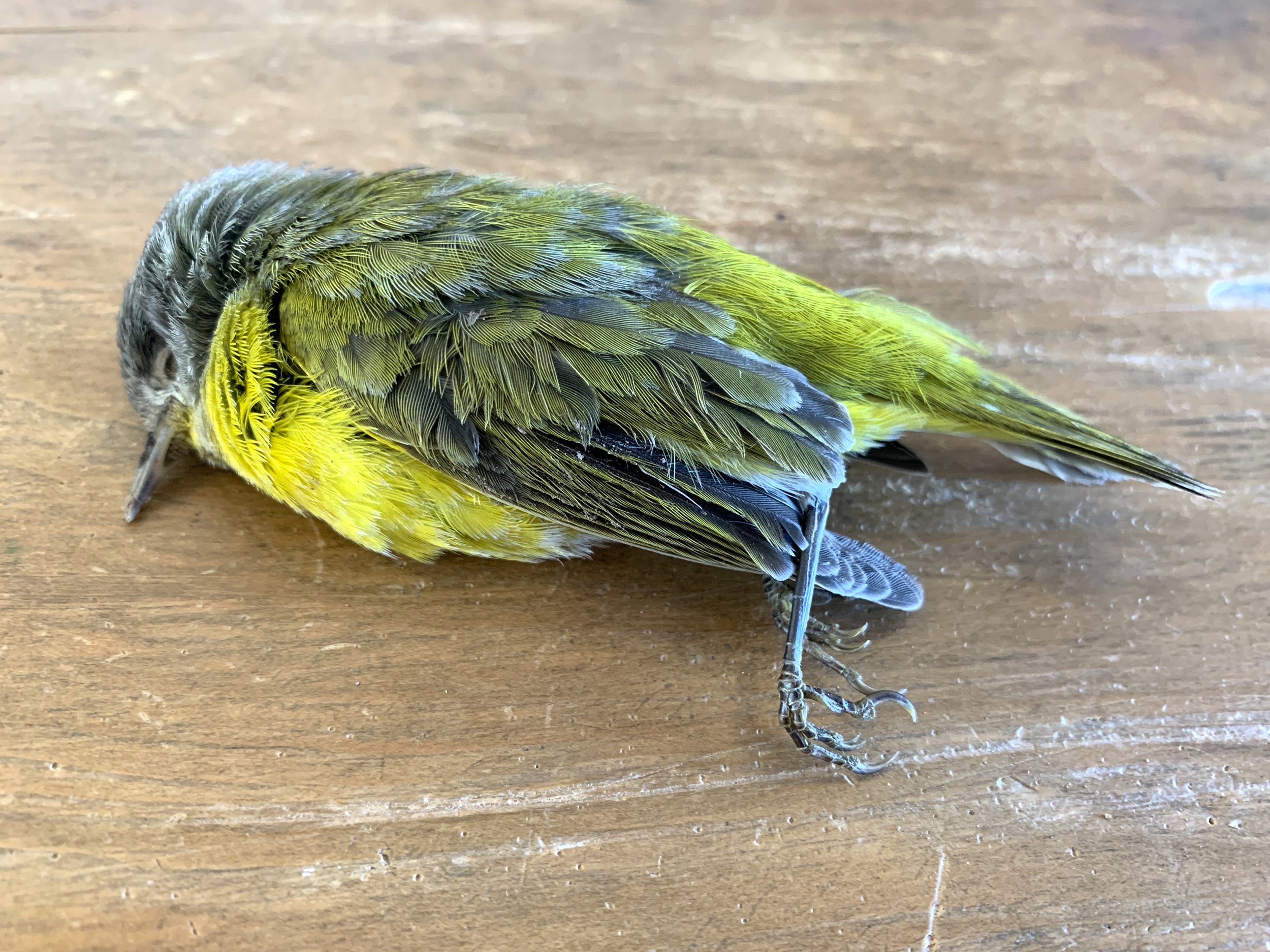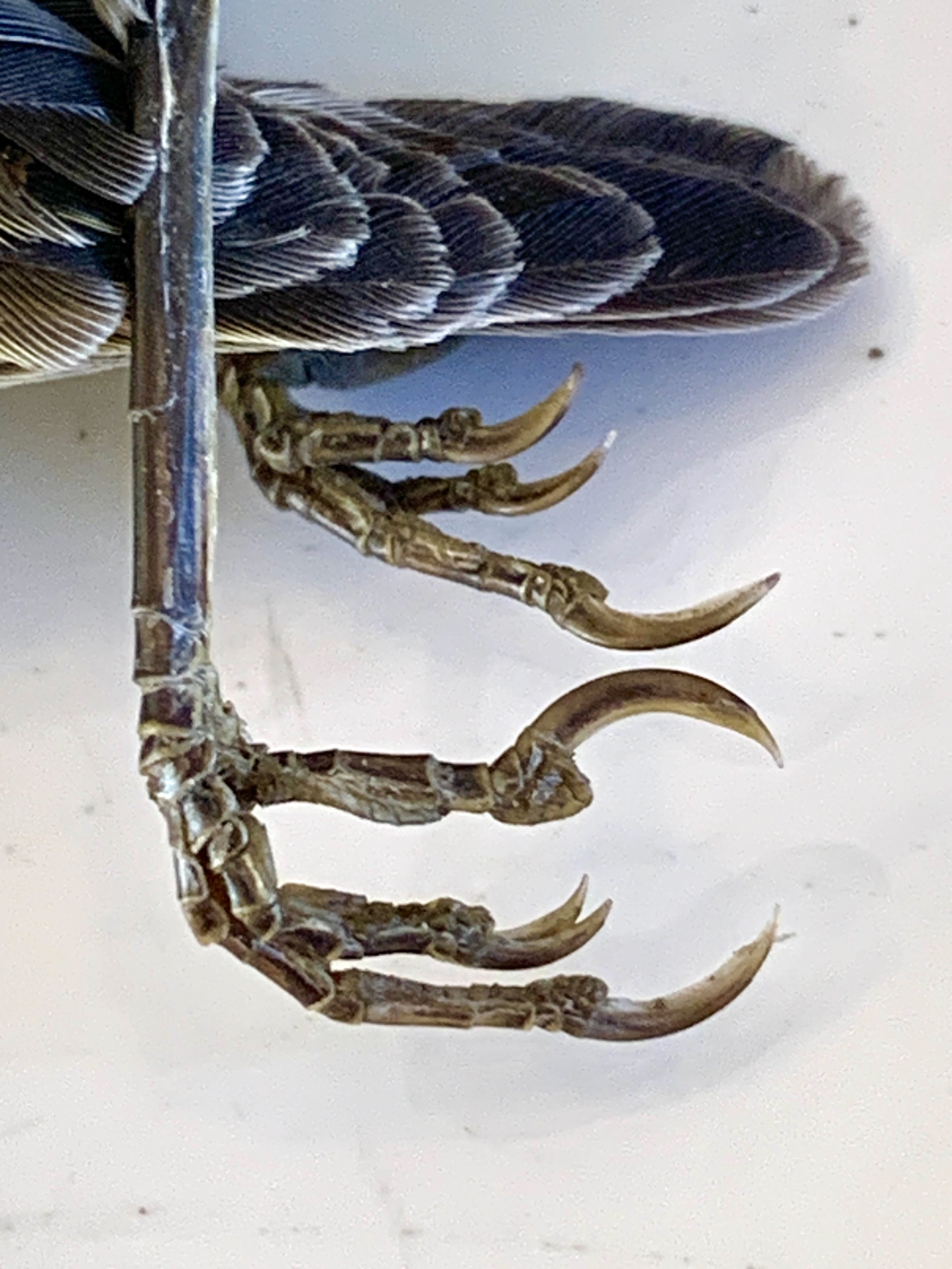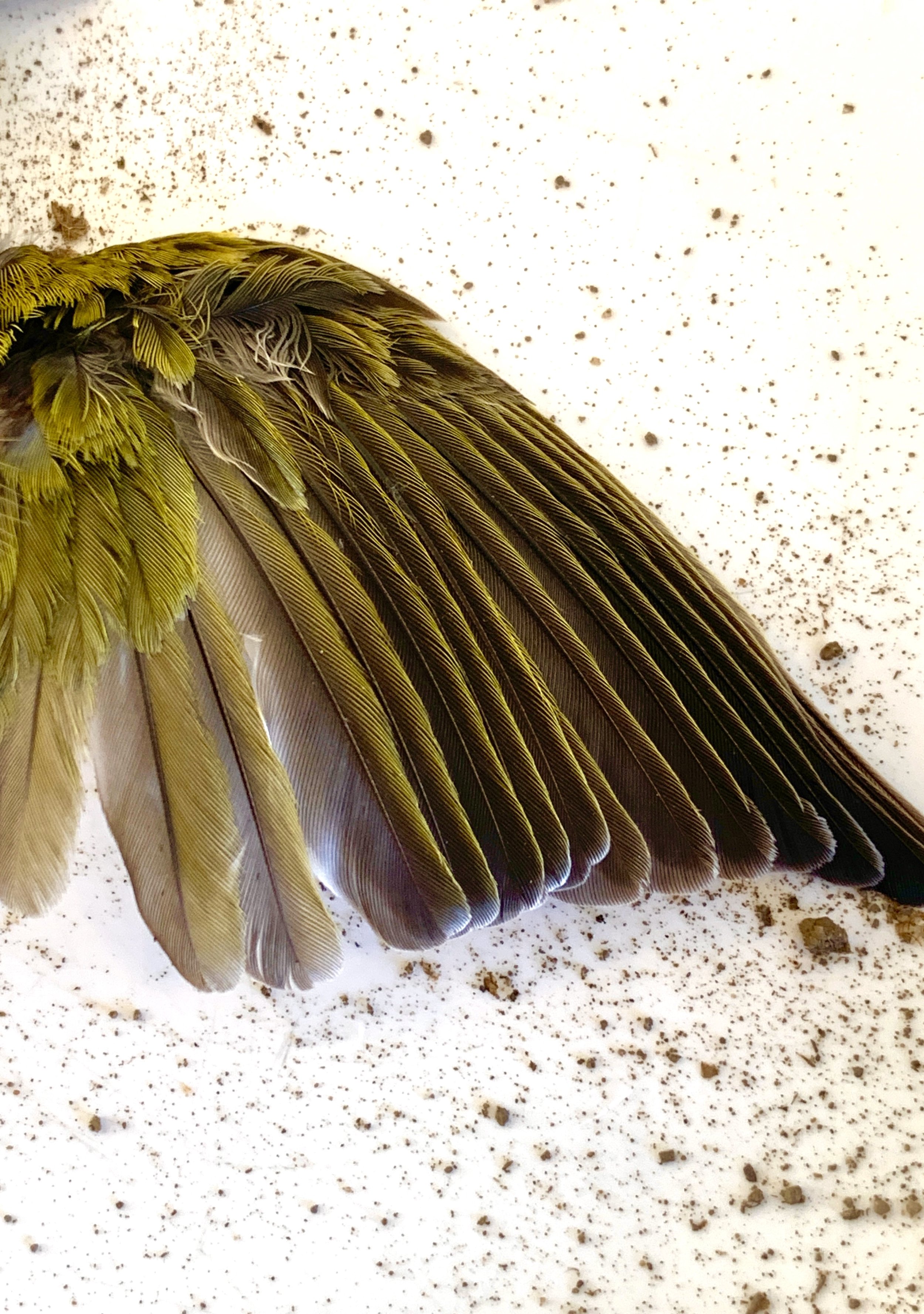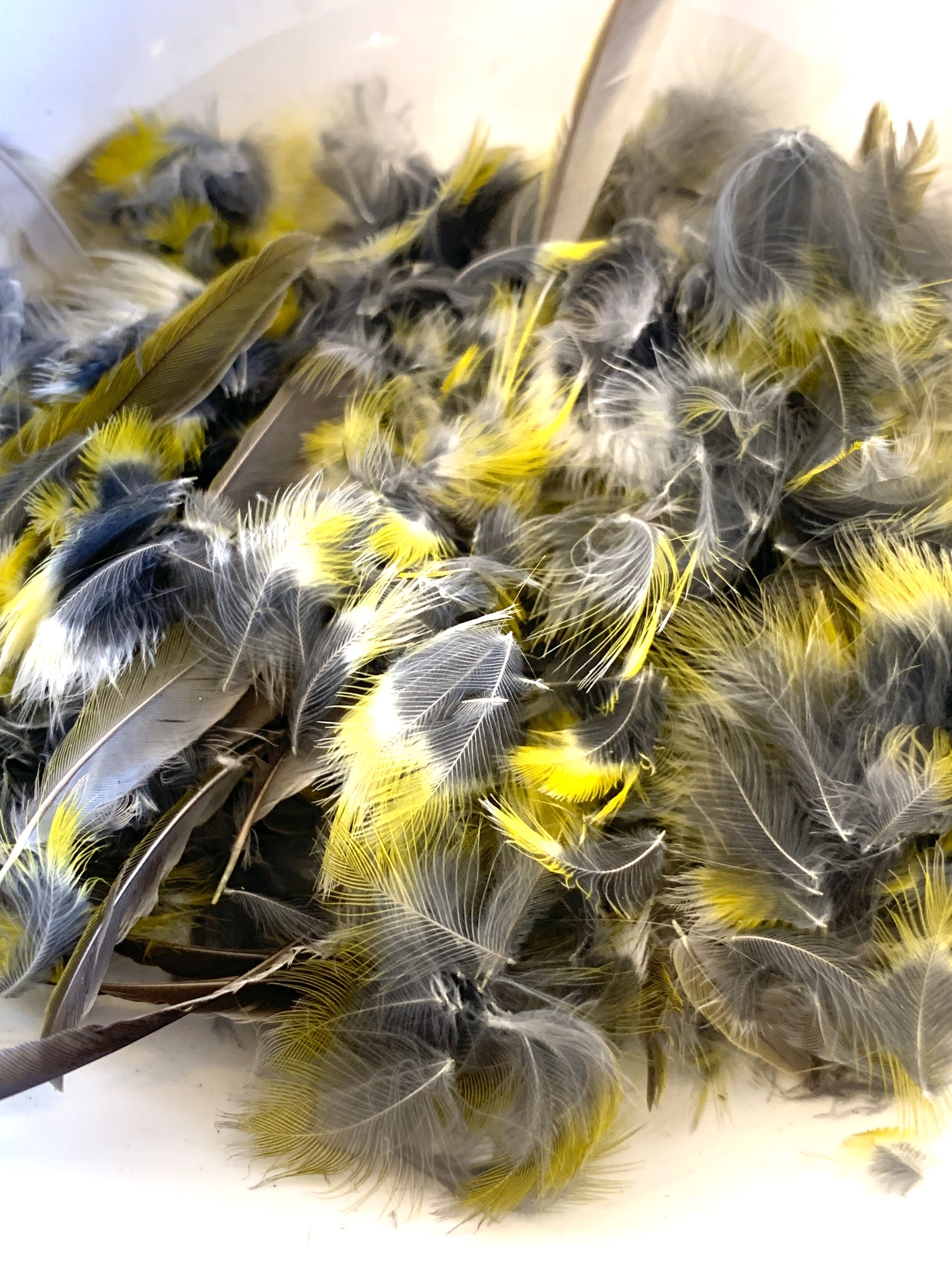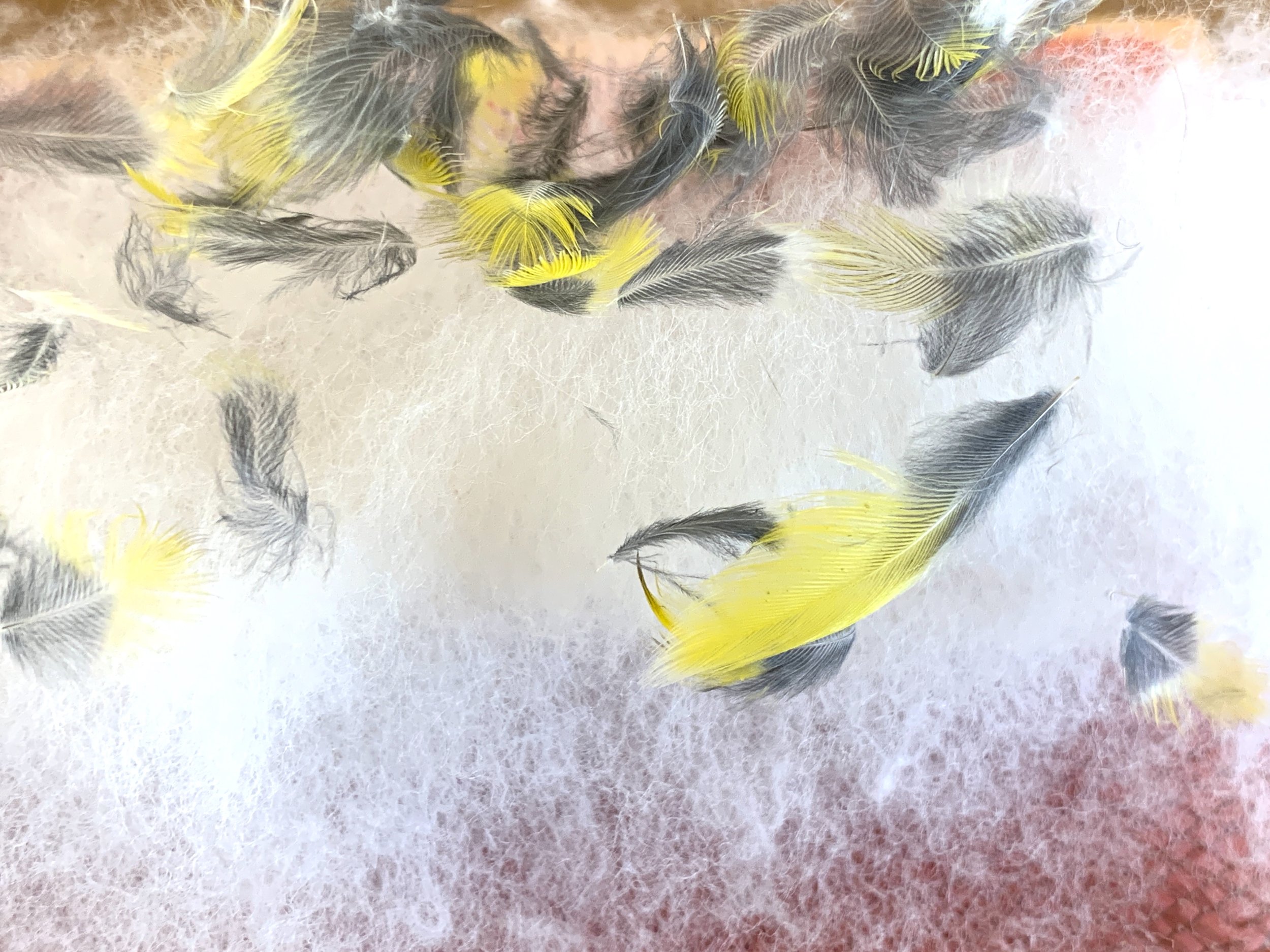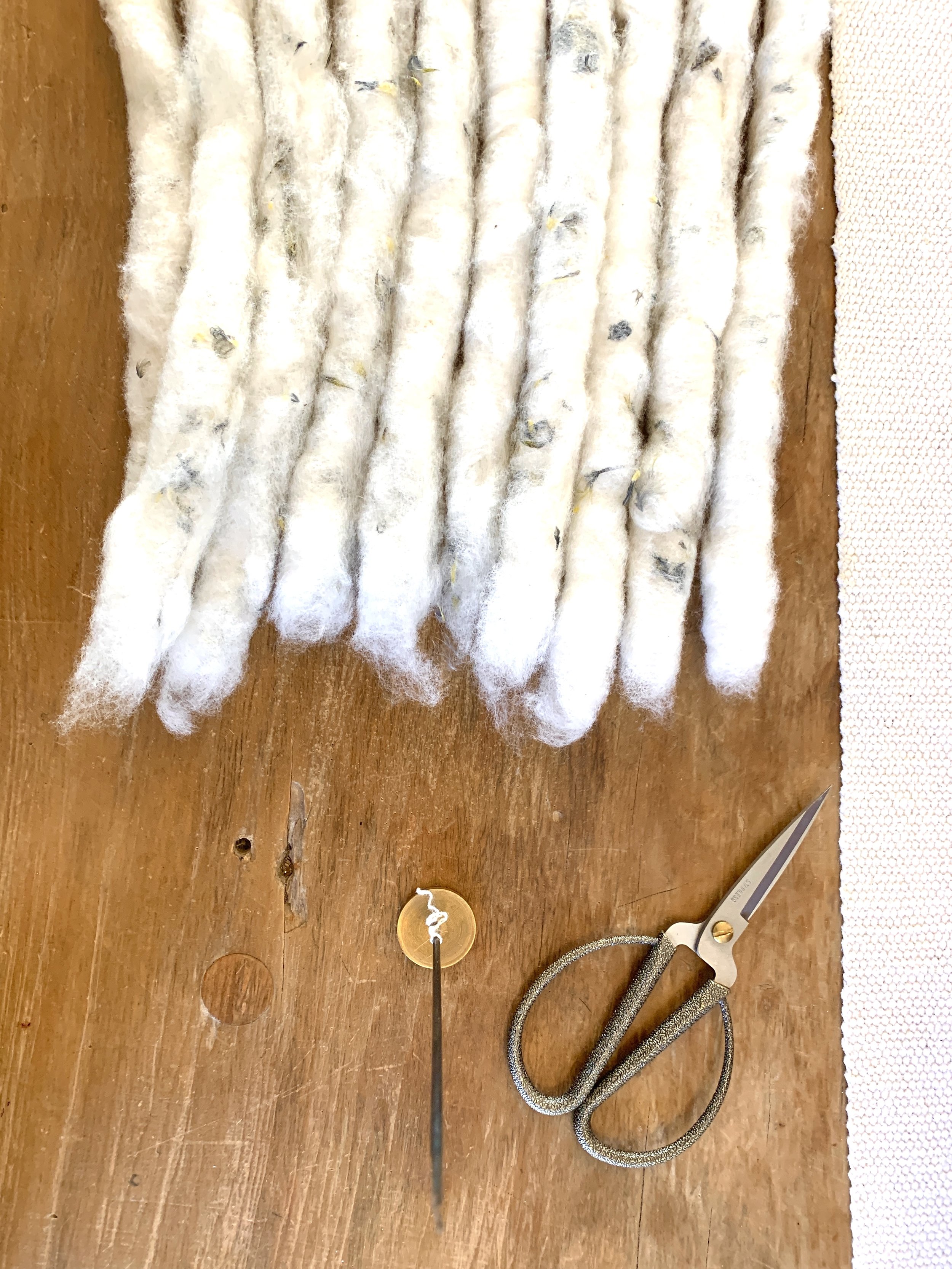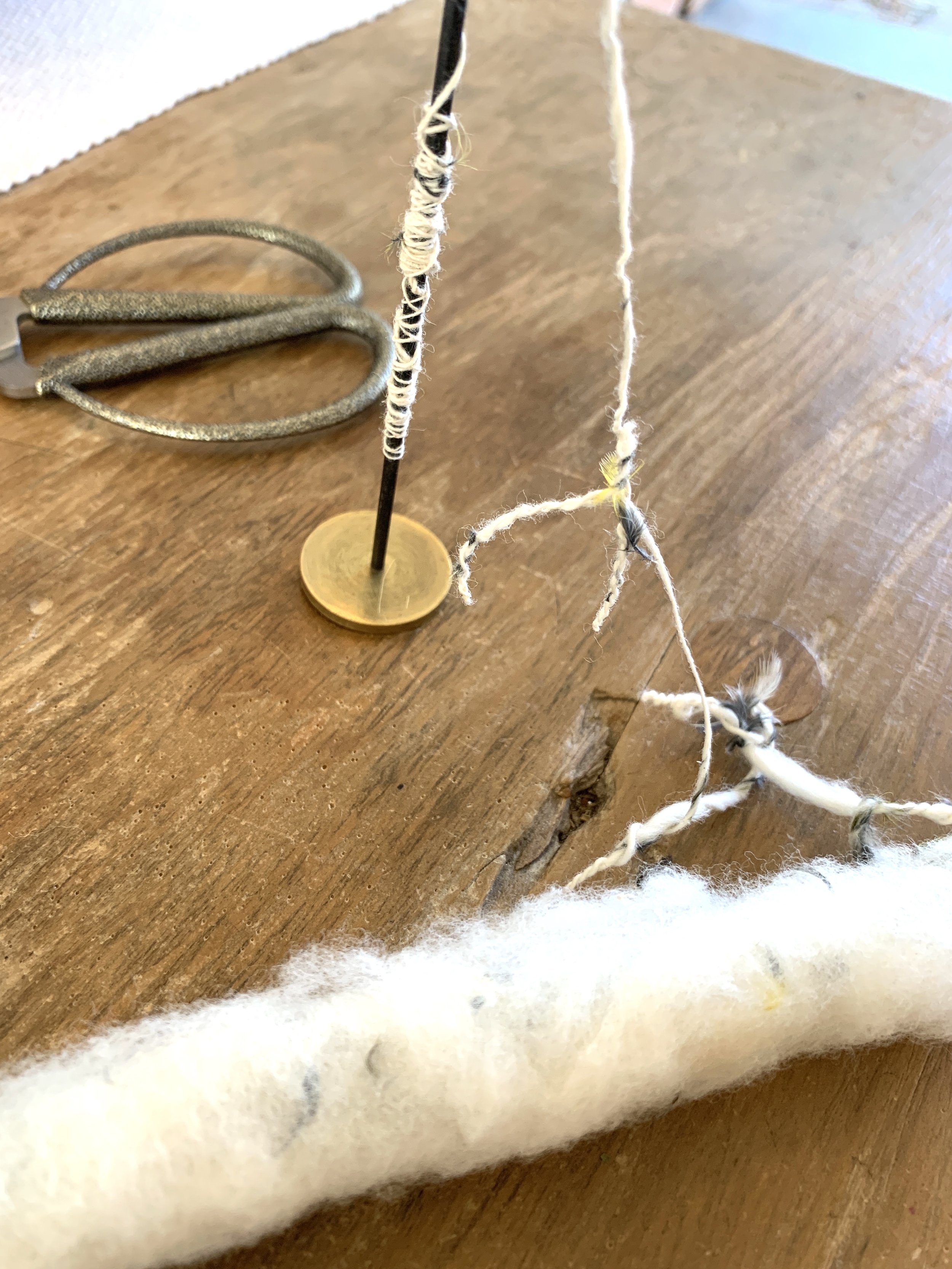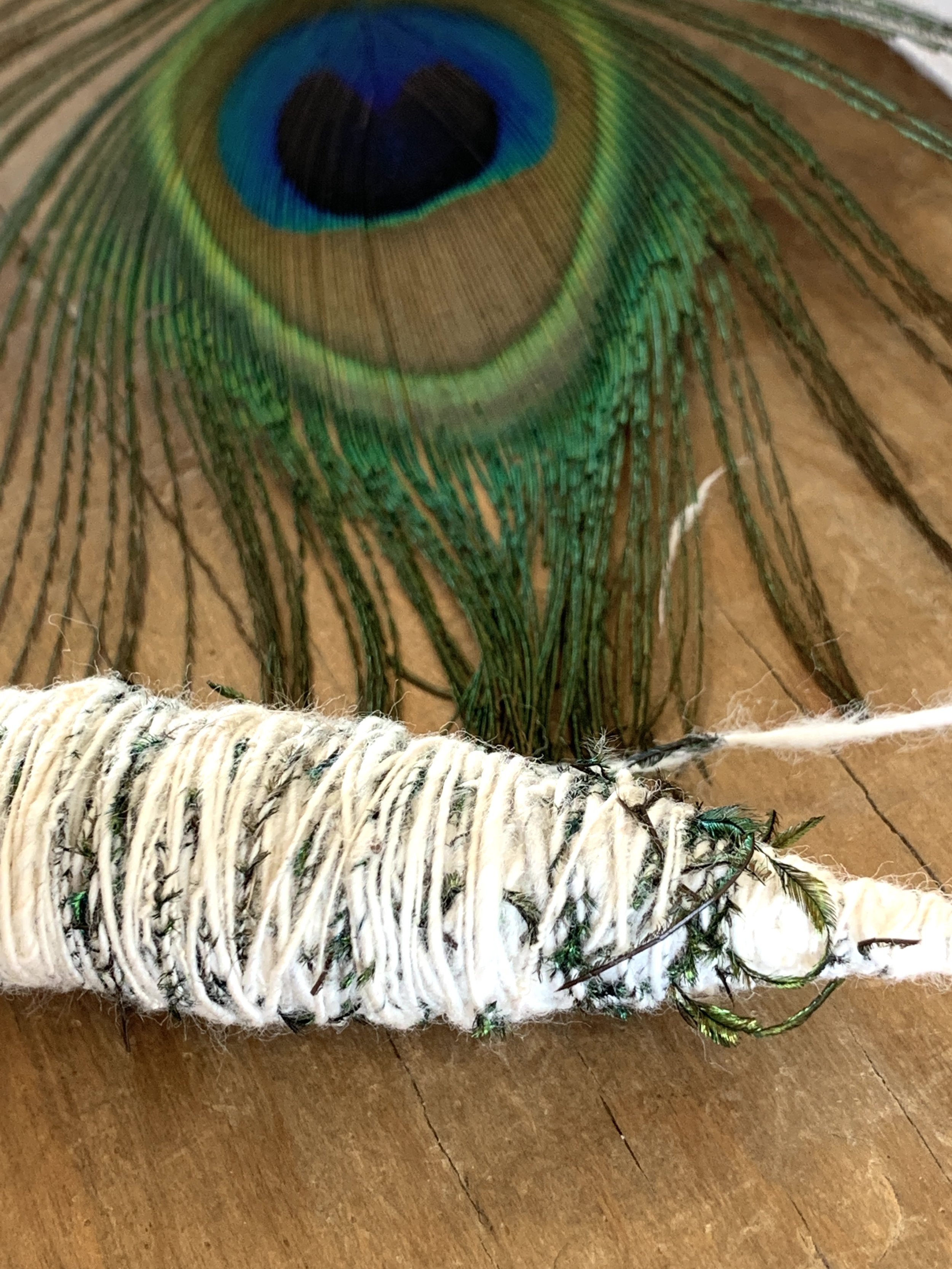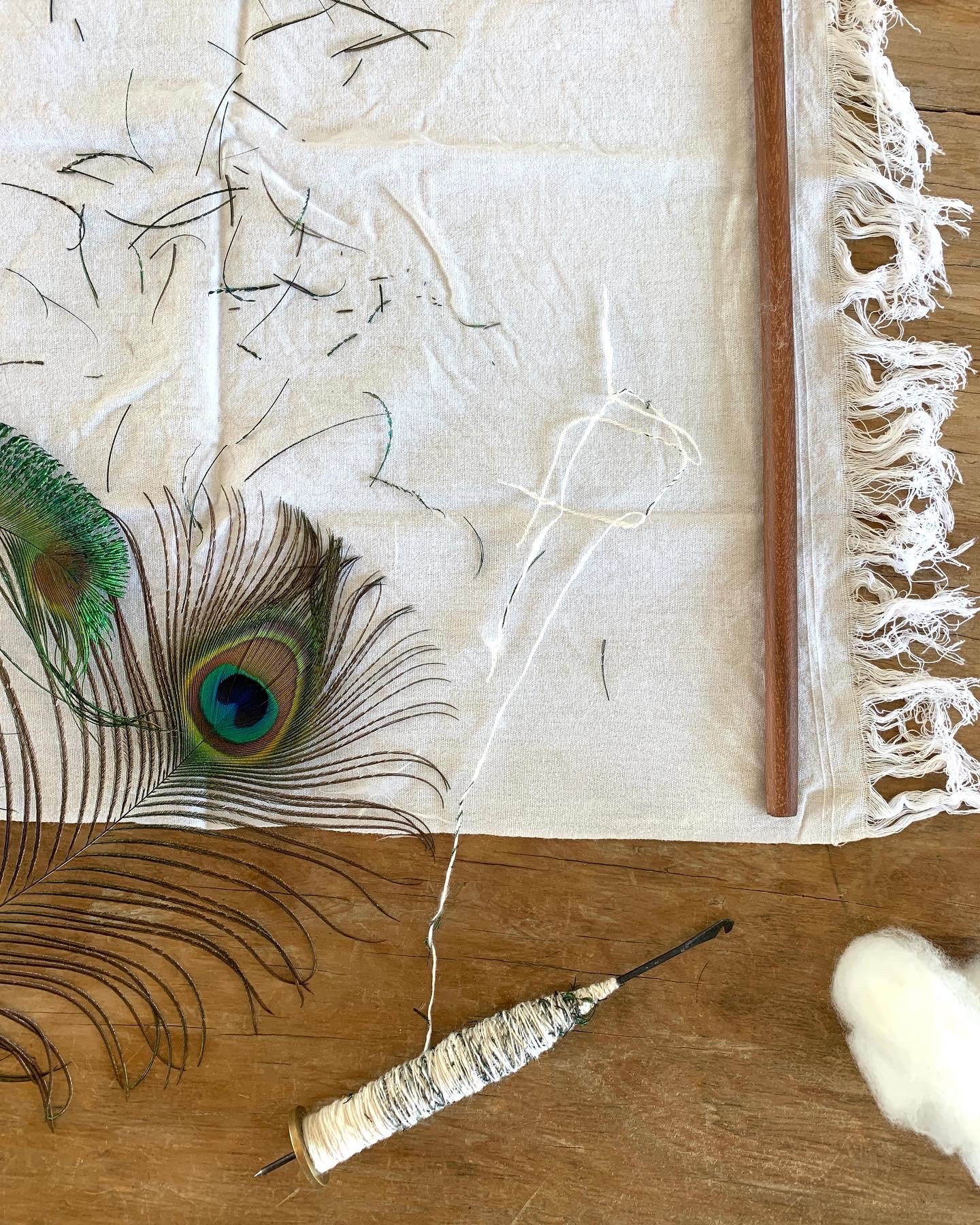Fibers & Feathers
Over the last few years I’ve been focusing more and more on my weaving and spinning fibers practice. Both processes are extremely time consuming, so usually I find that late nights, once my daughter has fallen asleep, makes for a good time to throw on an audio book, pour a glass of wine and get deep into work. It relaxes me a great deal to spin and weave, and like most creative endeavors, is helped along when there are no interruptions from kids, life, pets…et al!
My natural curiosity loves to see what happens when things are mixed up and I had been working with some native cotton from the coast of Oaxaca and successfully spinning it with a mix of either pochote (kapok) or milkweed fibers, both of these fibers have short tencil lengths which makes them weak if spun on their own. They are insanely silky and heavenly as mixed yarns and take natural dye beautifully as well. With this experience properly fleshed out, I had naturally begun thinking of other fibrous materials I could potentially mix with the cotton, but not having any luck seeing anything immediately around me, which is where I typically look. And then, one day I came across an extremly beautiful dead hummingbird, it had crashed into one of our windows. Usually I would have buried it so Mimi our feral rescue cat would not eat it or bring it to me as a gift- she’s often brought whole bloodied and gored pigeons into my bedroom to feast upon. But the beauty of this bird’s tiny and luminescent feathers had me pause, thinking wait… wait! I know how to pluck it! Immediately I recalled that 15 years ago, I once was invited to a duck hunt in Central Mexico and was generously given one of the birds to take home. Channeling my inner Julia Child, I went to Youtube for a lesson on how to pluck it (success!) The plan was to then to make her Duck à l’Orange recipe, but alas it turned out terribly, though I never forgot how easily the feathers came out of that duck!
So pluck the humming bird I did. And with a few trial and errors, I managed to find a way to spin a glorious yarn, which illuminates the specks of green and red, gold and black, perfectly in the sun.
A few weeks later I found another little dead bird, a yellow one this time and plucked, then spun his feathers too. Which got me thinking how I need to find a more regular source of feathers (other than poor crashed birds) and so it turns out that two of the women who work in Mexchic’s studio have peacocks as pets, apparently it’s a Oaxacan trend, haha. I now have a flowing supply of locally and sustainably procured feathers and have been slowly spinning them when I find some free time. I made a small weaving with the peacock feather yarn, it’s stunning and now slowly trying to figure out what I will make with the textile!
Feather work is a very important pre-hispanic craft and apart from ancient headdresses such as the most famous Penacho de Moctezuma II, it is a craft still practiced today around the country, most notably attached to textiles in the stunning rebozo shawls of Michoacan and the wedding attire of the women of Zinacantan Chiapas.


